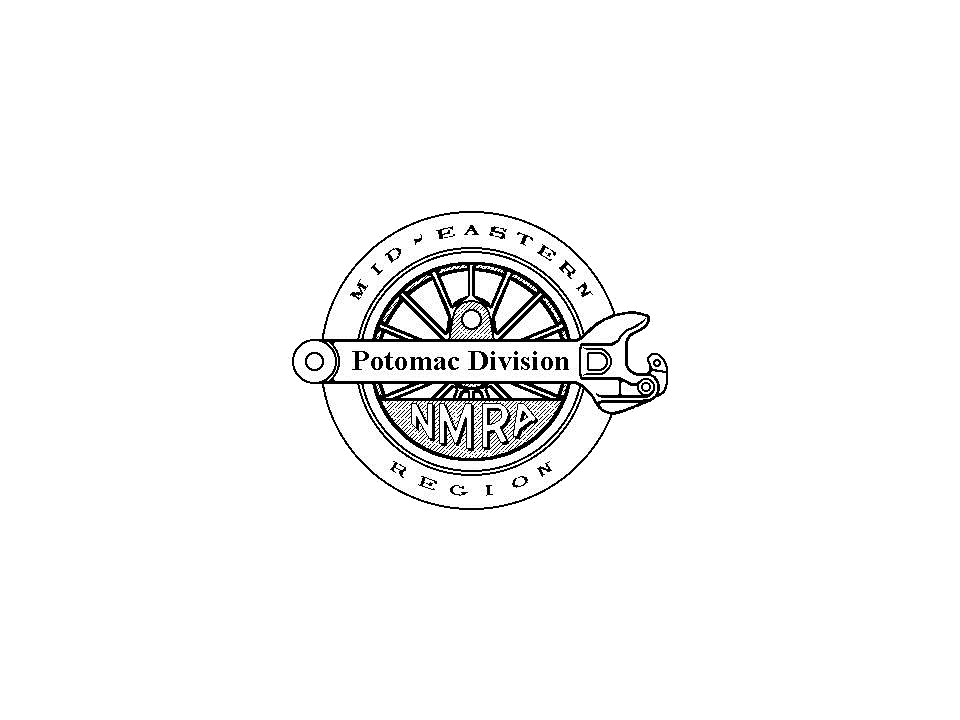HISTORY IN
A TIGHT SPACE REVISITED
I decided to visit Gary Eames’ Northern Central model railroad again on
November 19th. Even though I had seen it last year on a Potomac
Division tour, it was a short trip for me that didn’t involve driving
on the beltway so I opted to take advantage of another chance to view
it. For those who missed the last tour, the original Northern Central
ran in a general northerly direction from Baltimore to southern
Pennsylvania. The line was supposedly used by Abraham Lincoln to reach
Gettysburg in 1863 for his dedication speech at the battlefield there.
It was eventually absorbed into the Pennsylvania Railroad and has
recently become part of Baltimore’s light rail system. The graded
section beyond where the light rail ends continues on as a hike-bike
trail. I wrote it up at that time and have used some of my notes from
that earlier visit,
High rail O gauge has a tendency to overwhelm any space short of club
size, and it’s especially problematic with the room that Gary is using.
Working in it or even visiting in it is not for anyone with a tendency
to claustrophobia. The railroad is built on two levels and you need to
climb a step stool to view and/or access the upper level which connects
to the lower level via a helix. I chose to forego the climb and view it
from the ground. Aisle width is also, shall we say, a bit tight,
another element of a railroad that’s, unfortunately, not designed for
everyone.
Nonetheless,
despite its condensed size he has managed represent Baltimore very well
with the railroads, the PRR and the B&O, running behind the
ageing factories and businesses in the less appealing parts of town,
the sections of your typical older east coast cities that have seen
better days. He has interspersed appropriate models of both trains and
of the actual city landmarks combined with structures that look like
they belong there as well. The PRR station and the
Bromo-Seltzer tower are the most noteworthy of the real places, and an
establishment called the Kit Kat club, representing a business no doubt
similar in nature to Blaze Starr’s old haunt on E. Baltimore Street,
which I visited back in 1964 when she was still at the pinnacle of her
fame as part of the downtown scene. Power equipment on the layout
includes a PRR H-class 2-8-0 which was running this time, a GG-1, and a
PRR streamlined K-4. A B&O dockside 0-4-0 prowls the harbor
area. Some of the model factories on the layout had complete
interior details including the American Can Company that had both model
O scale can making machinery and model O scale people working in it.
Maybe he could invite Bill Day over to make the machinery in the
building actually produce O scale cans. That section also has an
operational rotating dumper for hopper cars, and while I wouldn’t have
expected too much to have changed since my last trip there, he has
added some interesting new highlights. Those of us in the early group
of visitors were subjected to a large, loud, storm as we entered the
room (shades of rolling thunder?) with numerous flashes of lightening;
fortunately for us, the heavy rain it must have produced missed the
aisles. He has also added a working grist mill (no actual grain – just
a turning wheel) that had an uncanny resemblance to Colvin Mill in
Great Falls, Virginia, and he is beginning a mountain with a tunnel to
enclose the helix that connects the two levels. Then there was a
Western Maryland Shay attached to a freight tailing a PRR N5c caboose
that I don’t recall from last time. But the operating signal system was
still there, controlled by a computer tucked somewhere under the lower
level, and the trains and turnouts are still controlled from a single
fixed panel. The compact nature of the space available makes the way he
has utilized it all the more fascinating, though I still find working
in such tight spaces is no more appealing this time around.
Bob
Rosenberg

